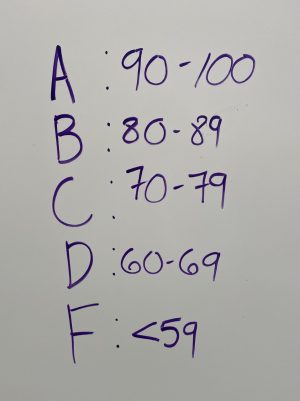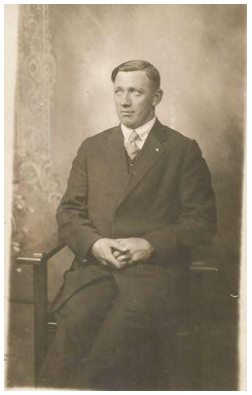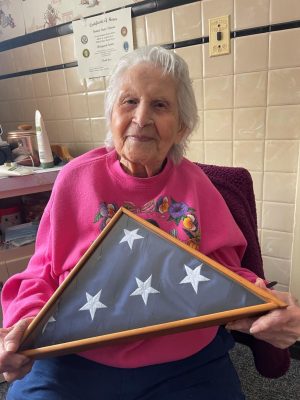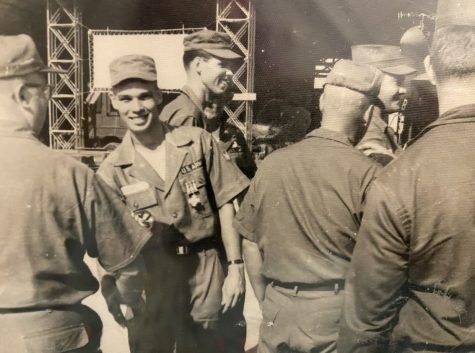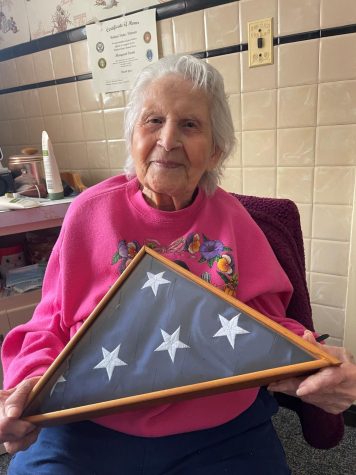The Queen of Computer Programming
The unsung female hero behind the tech we use every day.
Grace Hopper’s legacy lives on through the modern use of computers
April 26, 2022
When the average person hears the phrase “computer programming” or coding, the first idea that may come to mind is a male-dominated field that consists of complicated sequences, many numbers, and difficult concepts that are hard to grasp-especially for a woman or anyone over the age of 30. Yet Grace Murry Hopper, a computer scientist from New York, completely ignored those stereotypes and misconceptions about the computer programming set up by society. She was a pioneer in her field of study throughout her whole life, showing others that computer engineering was not just a boring, unimportant career that was made for smart, white men who liked mathematics.
Grace Hopper was born on December 9th, 1906. Her interest in engineering and piecing things together started from a very young age. She could always be found on the kitchen floor by her family, taking apart household goods and restoring them to what they once were. This curiosity would later lead Hopper into pursuing much larger things when she would enroll and graduate from Vassar College with multiple degrees in mathematics and physics. However, this was merely satisfactory for her, as she continued her education through Yale University and received her master’s degree in mathematics afterwards. One year later, Hopper began teaching mathematics at Vassar College while studying for her doctorate degree at Yale at the same time. She then presented the chance to study with Richard Courant, a well-known mathematician at the time, at New York University.
While Grace Hopper was pursuing a higher education throughout the 1930’s, both the government and troops were gearing up to enter World War II. Hopper pulled away from her studies and was intrigued by the idea of the Navy W.A.V.E.S, or “Navy Women Accepted for Voluntary Service”. Known as a female branch, this group’s purpose was to give women a chance to do their part in serving the U.S Navy.
Hopper took the opportunity to join the W.A.V.E.S in 1943 and became a lieutenant for the group in 1944, where she was assigned to work on several projects. One such project was the development of the Mark I, which was an early prototype of the electronic computer. Hopper’s life proves that programming is a language within itself that opens endless opportunities for people, of any age or gender, to create technology that helps the world in many ways. — Savanna Ruzzano
In 1952, Grace Hopper revolutionized computer programming in the U.S and invented the first ever computer compiler, known as “A-0”. This compiler was a program that converted common sense commands into binary computer language. This made it possible to write programs for multiple computers at a time, rather than just a single machine. Every modern-day computer programming language that we would create would be based on and built from her work on this project.
After two full decades of naval service, Hopper retired at the age of 60. However, it wasn’t long before she was called back to the Navy as a commander and returned to active service to assist in standardizing the Navy’s multiple computer languages for 20 additional years. She officially retired at the age of 79 as a rear admiral and was met with many honorary degrees, as well as awards, scholarships, and conferences that were named in honor of her. The computer programming pioneer was even awarded the National Medal of Technology, that nation’s highest technology award, by President George Bush in 1991. She also was the posthumous recipient of the Presidential Medal of Freedom in 2016, due to her impressive contributions to the field of computer science until her death in 1992.
Hopper’s life proves that programming is a language within itself that opens endless opportunities for people, of any age or gender, to create technology that helps the world in many ways. It is a powerful tool that people like can use and make a significant impact on the world and how it functions. Whether that’s building solutions for difficult problems, organizing important information, creating faster communication between locations, or learning how the world works, we owe all of our current progress in technology to the queen of computer programming herself, Grace Murray Hopper. She never settled for what she already had accomplished in her lifetime and was always determined to push the limits and prove to others what she was truly capable of.


